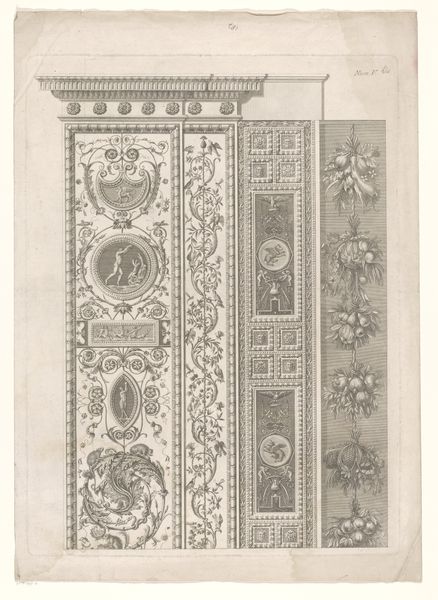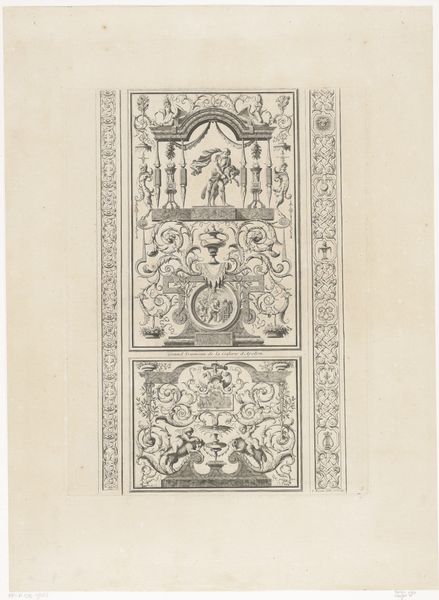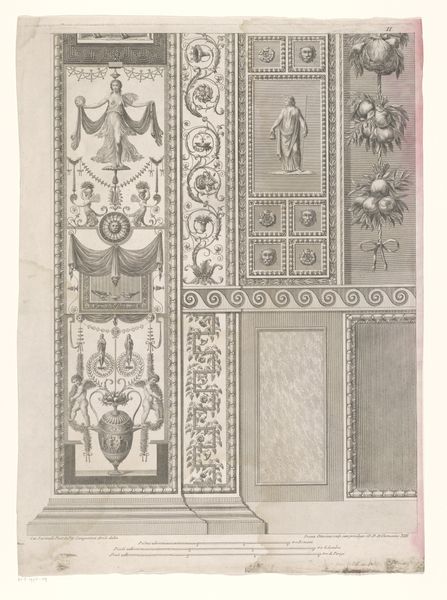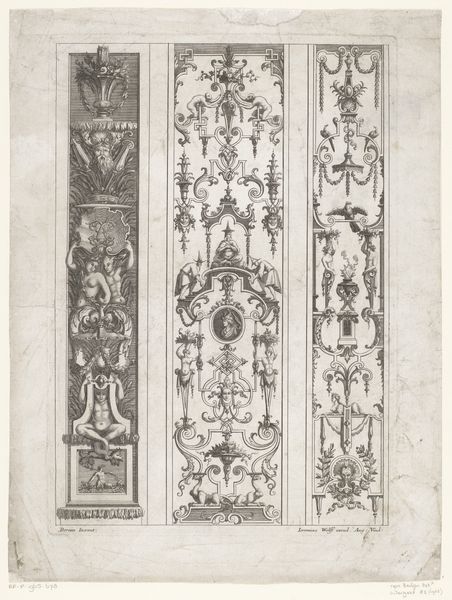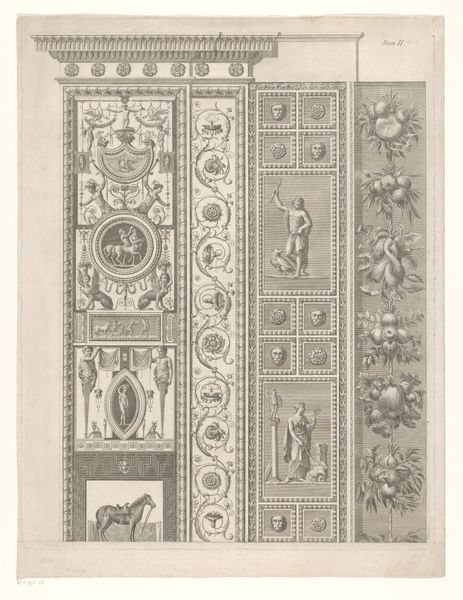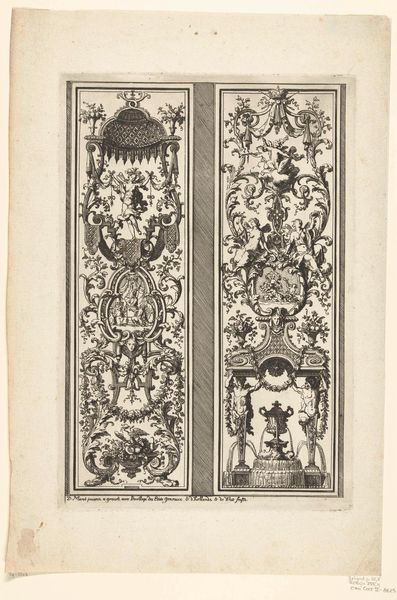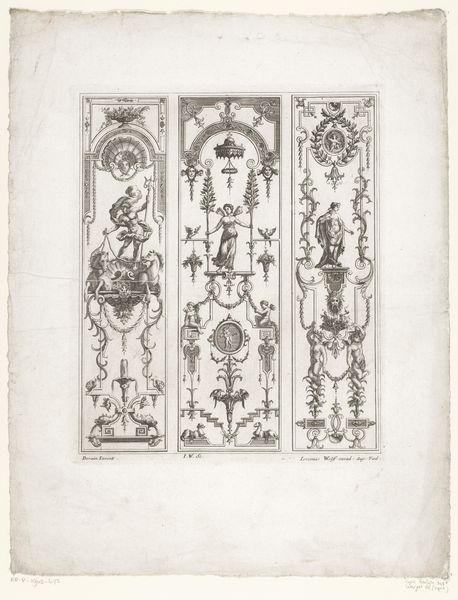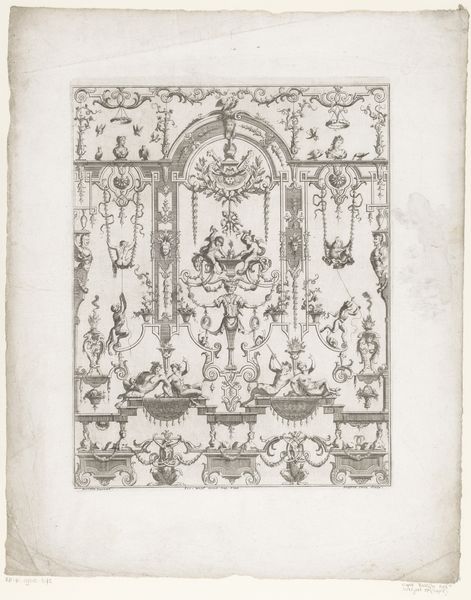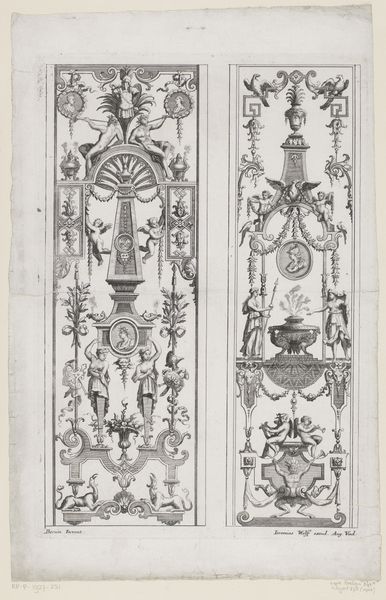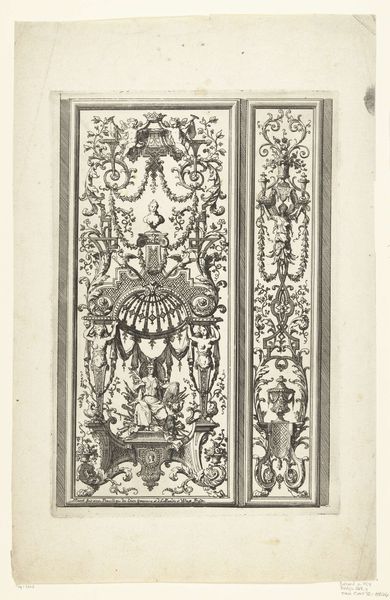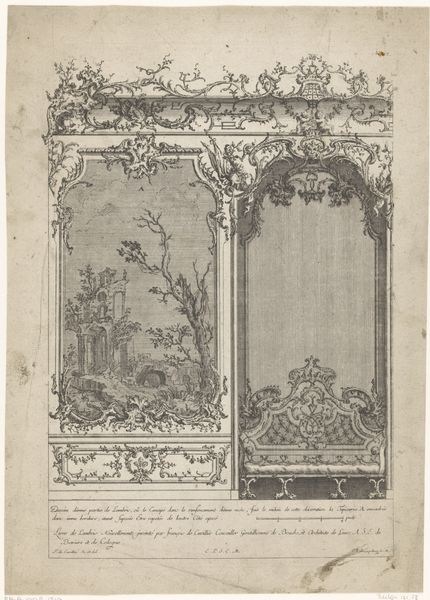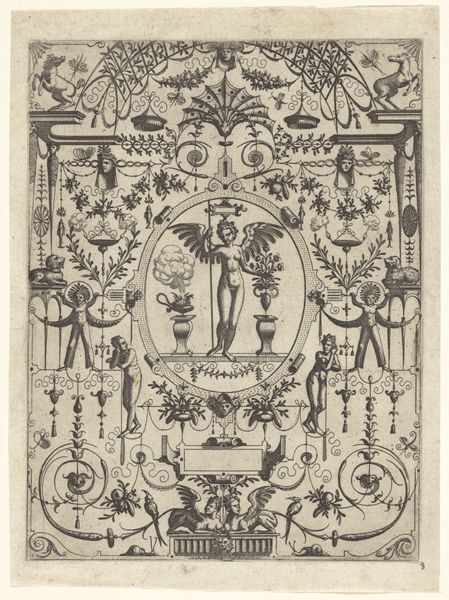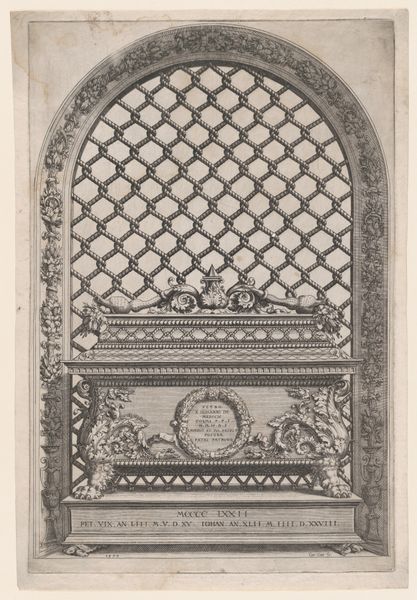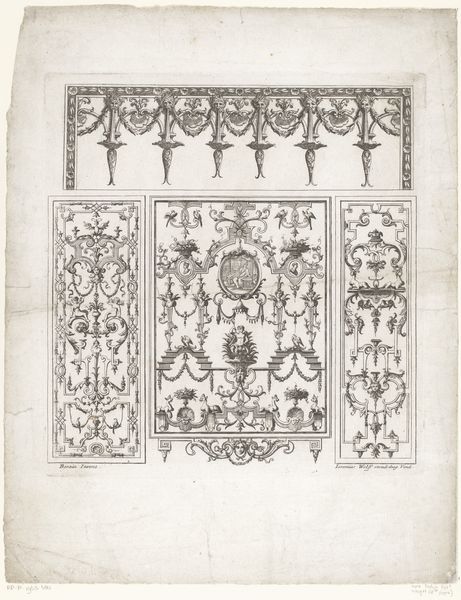
Dimensions: height 554 mm, width 401 mm
Copyright: Rijks Museum: Open Domain
Curator: This is “Onderste deel van decoratieve pilaster,” or “Lower part of a decorative pilaster,” a print by Giovanni Ottaviani made before 1779. Isn’t it lovely? Editor: It has such a formal feeling—a neoclassical grid populated by statues and floral garlands, frozen in time, but somehow also incredibly dynamic. I'm immediately struck by the almost excessive ornamentation. Curator: Excess? To me, it feels meticulously balanced. There's such careful control in how the figures interact with the architectural structure. Note the Cupid at the base with his little globe, carrying such weight and ambition. Almost comical! Editor: It is a loaded image for sure. Decorative pilasters like these speak to the construction of power and privilege, masking it behind this refined facade of art. Consider how the male nude is idealised here—reiterating colonial views and power relations of that time. Curator: But don't you think the decorative nature has value? Like a garden where control serves creation. Or when we, as humans, find the natural human state of feeling at our best, even if those emotions are also a result of society? There’s also such technical skill! I am always amazed by the medium itself and its ability to capture the finest details of texture. The way Ottaviani renders the marble, fabric, and flesh...incredible. Editor: Absolutely. The medium allows it to have an outsized influence, permeating visual culture far beyond the walls of a palace. That is also the tension with decorative arts: they allow those messages to take hold on a broader societal level, solidifying certain aesthetic and moral codes. Curator: A complex object that gives and takes, then. Isn't that all art? In a time of strict roles for humanity, the skill behind this is impressive, and allows us to interpret the feelings it conveys with great impact. Editor: A tension we still feel, right? To what extent should art challenge power and to what extent does art perpetuate inequalities by encoding privilege and projecting normative views? Curator: Right! And, well… I guess that’s what makes art so wonderful to debate. It shows where we’ve been and what still has room to change!
Comments
No comments
Be the first to comment and join the conversation on the ultimate creative platform.
